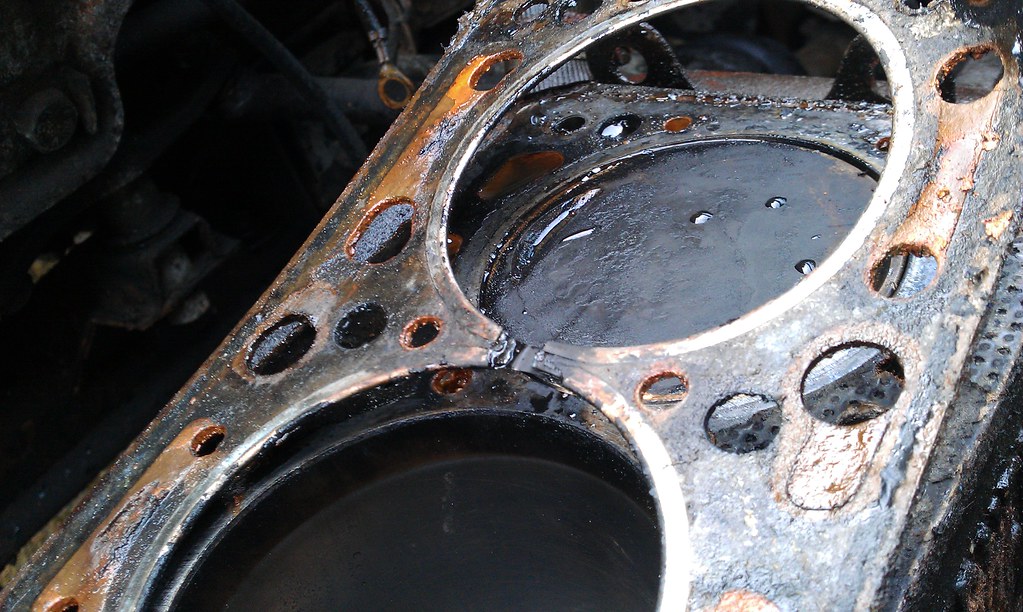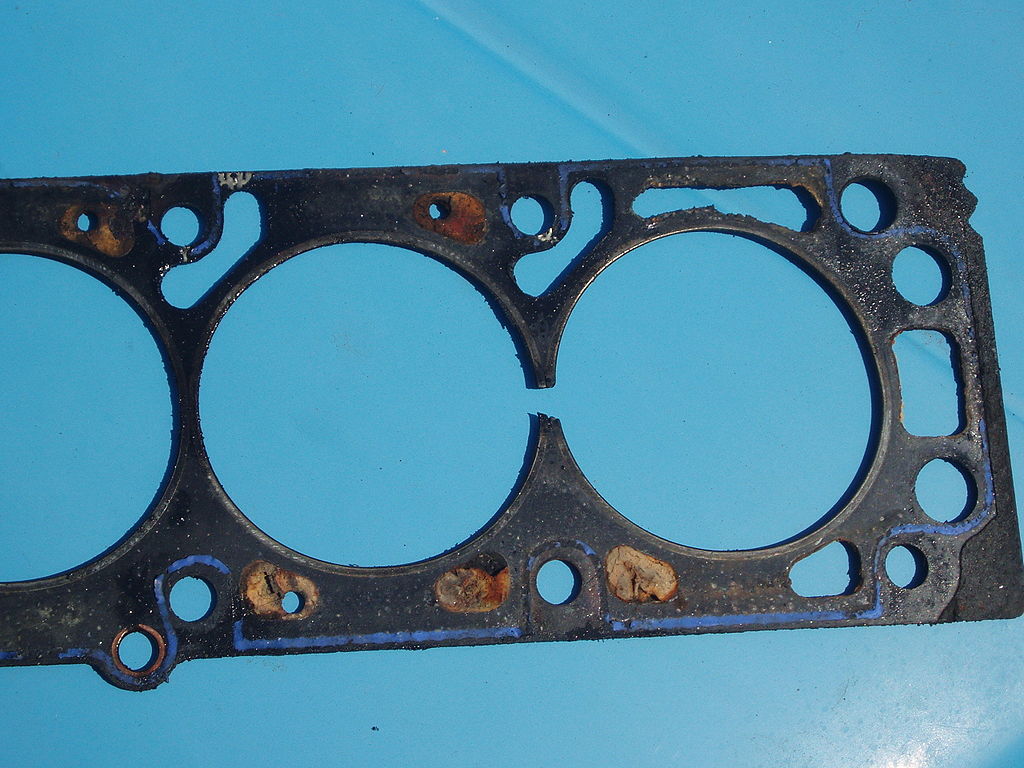Is Your Engine in Trouble? How to Spot a Blown Head Gasket
A head gasket is like a really important seal in your car’s engine. When it breaks, it can cause all sorts of problems.
But how do you know if that’s what’s wrong with your car?
Well, you can find the symptoms in your car if the head gasket is failing. But most of the time, it’s not easy to spot. You need to look for symptoms which can be a little hard to understand.
So, I’ve put together 10 common problems. If you notice these in your car, then you might have a blown head gasket.

These signs are easier to spot and can help you figure out if it’s time to see a mechanic.
What does a head gasket do?
A head gasket is a critical engine component that forms a seal between the engine block and cylinder head. Its primary function is to contain the combustion process within the cylinders while preventing the mixing of engine oil and coolant.
The head gasket also seals the coolant passages and oil channels that run between the block and head. By maintaining these seals, it ensures proper compression, efficient cooling, and adequate lubrication throughout the engine.
1. White Exhaust Smoke
If you see lots of white smoke coming out of your car’s exhaust pipe, it might mean your head gasket is broken. This smoke happens because coolant is leaking into parts of the engine where it shouldn’t be.
White smoke is easy to spot, especially on a clear day. If you see it every time you start your car or when you’re driving, it’s a big clue that something’s wrong with your head gasket.
2. Coolant Keeps Disappearing
Your car needs coolant to keep the engine from getting too hot. If you keep having to add coolant, but can’t see any leaks under your car, your head gasket might be the problem.
Check your coolant level regularly. If it keeps going down but you can’t find any leaks, it might be leaking inside the engine because of a bad head gasket.
3. Engine Gets Too Hot
A broken head gasket can make your engine get too hot. This happens because the coolant isn’t doing its job properly.
Watch your car’s temperature gauge. If it often shows the engine is too hot, or if your car overheats a lot, it could be because of a blown head gasket.
4. Oil Looks Milky
If your car’s oil looks milky or like chocolate milk, it’s a sign that coolant is mixing with the oil. This shouldn’t happen in a healthy engine.
Check your oil using the dipstick. If it looks milky or creamy instead of clear brown or black, your head gasket might be letting coolant leak into the oil.
5. Bubbles in the Radiator
When your head gasket is broken, it can let exhaust gases get into your cooling system. This makes bubbles in your radiator or coolant overflow tank.
Look in your radiator or coolant tank when the engine is running. If you see bubbles forming, it could mean exhaust gases are leaking through a bad head gasket.
6. Engine Runs Poorly
A blown head gasket can make your engine run rough or lose power. You might notice your car doesn’t accelerate as well as it used to.
Pay attention to how your car drives. If it feels weak, shakes a lot at idle, or misfires, these could be signs of a head gasket problem.
7. Leaks Between Engine Parts
A failing head gasket might let oil or coolant leak out where the engine block meets the cylinder head. This often leaves stains on the outside of your engine.
Check around your engine for unusual wetness or stains. Oil leaks will be dark and sticky, while coolant leaks often leave a colorful residue.
8. Spark Plugs Get Dirty Fast
With a bad head gasket, coolant or oil can get into places they shouldn’t, like where your spark plugs are. This makes the spark plugs get dirty or worn out faster than normal.
If your car starts running rough soon after you change the spark plugs, it might be because a blown head gasket is messing them up quickly.
9. Sweet Smell from the Exhaust
A blown head gasket can let coolant leak into the exhaust. This often creates a sweet, syrupy smell coming from your exhaust pipe.
Notice any unusual smells from your car’s exhaust. A sweet scent, especially if you also see white smoke, could mean coolant is leaking through a bad head gasket.
10. Failed Emissions Test
A car with a blown head gasket might not pass an emissions test. This happens because the engine isn’t burning fuel properly, leading to higher emissions.
If your car unexpectedly fails an emissions test and you notice other symptoms on this list, a blown head gasket could be the cause. Getting it fixed might help your car pass the test next time.
How to prevent a blown head gasket

Preventing a blown head gasket involves proper maintenance and careful driving habits.
Regular coolant maintenance
Check your coolant levels frequently, at least once a month. Low coolant levels can lead to overheating, which is a common cause of head gasket failure.
Make sure to use the correct type of coolant for your vehicle. Different engines require specific coolant formulations. Using the wrong type can lead to corrosion and damage.
Flush and replace your coolant according to your vehicle manufacturer’s recommendations. Over time, coolant can become acidic and lose its protective properties.
Monitor engine temperature
Keep an eye on your temperature gauge while driving. If you notice the temperature rising into the red zone, pull over safely and turn off the engine to prevent overheating.
Ensure your cooling fan is working properly. A malfunctioning fan can cause your engine to overheat, especially in stop-and-go traffic.
Address overheating immediately
If your car overheats, don’t continue driving. Pull over, let the engine cool down, and have it towed if necessary. Driving an overheated engine can quickly lead to head gasket failure.
Maintain proper oil levels
Check your oil regularly and keep it at the recommended level. Low oil levels can cause increased engine temperatures and stress on the head gasket.
Change your oil and oil filter according to your vehicle’s maintenance schedule. Clean oil helps regulate engine temperature and reduce wear.
Avoid extreme driving conditions
Limit extended periods of high-speed driving or towing heavy loads, especially in hot weather. These conditions put extra stress on your engine and head gasket.
Allow your engine to warm up properly in cold weather before driving at high speeds. Rapid temperature changes can cause the head gasket to expand and contract, potentially leading to failure.
FAQ
Can I drive with a blown head gasket?
It’s not recommended to drive with a blown head gasket. Doing so can cause severe engine damage, including overheating and loss of power.
If you suspect a blown head gasket, it’s best to have your car towed to a mechanic for inspection and repair.
How much does it cost to fix a blown head gasket?
The cost typically ranges from $1,000 to $2,500, depending on your vehicle’s make and model. Luxury or high-performance vehicles may cost more. This high cost is due to the labor-intensive nature of the repair, which often requires significant engine disassembly.
How long does it take to repair a blown head gasket?
On average, repairing a blown head gasket takes 5 to 8 hours for a skilled mechanic. However, complications or additional damage can extend this time.
In some cases, it might take up to several days if parts need to be ordered or if the engine requires additional work.
Can a blown head gasket fix itself?
Unfortunately, a blown head gasket cannot fix itself. Once the gasket has failed, it will continue to deteriorate if not addressed.
Is it worth fixing a blown head gasket?
Whether it’s worth fixing depends on your car’s age, overall condition, and value compared to the repair cost. For older cars or those with other significant issues, replacement might be more economical. Consult a trusted mechanic for personalized advice.

My name is Ari, and I’m the owner and copywriter at Tailored Niche and Nichesites.online. I specialize in creating high-quality, niche-focused content that helps businesses stand out online.
I deliver content that connects with your audience and gets real results.

